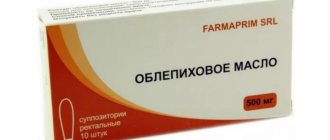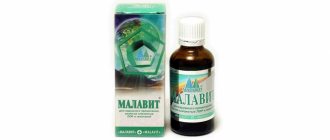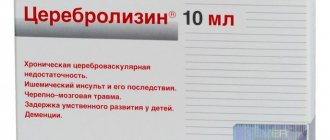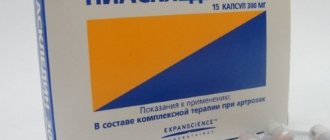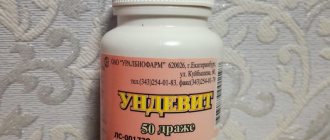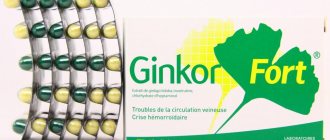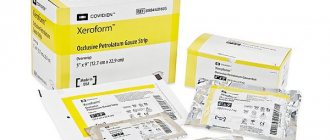Description and composition
The main active ingredient is triamcinolone. It belongs to the group of glucocorticosteroid hormones and exhibits a wide range of effects that are characteristic of them:
- Anti-inflammatory.
- Antipruritic.
- Antiallergic.
- Immunosuppressive.
- Decongestant.
Thanks to this, Kenalog is able to influence the mechanism of development of many diseases, stopping pathogenetic processes and eliminating symptoms in the patient. The mechanism of action of Kenalog is to block the release of inflammatory mediators, as well as stabilize lysosomal membranes. It also neutralizes the negative effect of histamine, which is to increase the permeability of cell membranes. In addition, steroidal anti-inflammatory drugs suppress the production of antibodies and reduce the number of circulating lymphocytes.
Triamcinolone is one of the most powerful corticosteroid hormones. In the form of acetonide, it is 8 times more effective than prednisolone.
Triamcinolone exhibits negligible mineralocorticoid activity. At the same time, it affects the metabolism of fats, proteins and carbohydrates.
During treatment, there is an increase in the number of red blood cells and neutrophils, as well as a decrease in eosinophils and basophils.
Corticosteroid hormones are highly effective and quick to achieve effect. In addition, their advantage is the ability to influence all stages of the inflammatory process. Triamcinolone prevents or inhibits the first signs of inflammation (pain, redness, increased local temperature, swelling), and also prevents the pathology from progressing and entering later stages (fibroblast proliferation, collagen formation).
When administered intramuscularly, the maximum concentration can be achieved only after 8 hours. However, the drug is also eliminated slowly - its level decreases after 72 hours, which provides a long-term therapeutic effect. According to research, with any method of administration, the drug is completely absorbed, the difference is only in the speed of absorption and the area of effect.
Kenalog
Kenalog (active ingredient - triamcinolone) belongs to the group of glucocorticosteroids. The drug has antipruritic, anti-inflammatory, immunosuppressive and antiallergic effects and can be used both locally and systemically, which determines a wide range of its use: from chronic obstructive diseases of the respiratory tract to dermatological diseases, from various forms of joint damage to hay fever (hay fever).
Kenalog suppresses the activity of tissue macrophages and leukocytes, preventing the latter from penetrating into the site of inflammation. Interferes with the processes of interleukin-1 synthesis and phagocytosis, “disarming” macrophages. Stabilizes lysosome membranes, thereby reducing the level of proteolytic enzymes at the site of inflammation. Reduces the permeability of small blood vessels caused by the release of the mediator of allergic reactions, histamine. Inactivates connective tissue cells fibroblasts, thereby suppressing collagen formation. Kenalog inhibits the synthesis of inflammatory mediators prostaglandins and leukotrienes by suppressing the activity of phospholipase A2 and the release of cyclooxygenase-1. Reduces the number of lymphocytes, monocytes, basophils and eosinophils circulating in the blood by moving them into the lymphoid tissue, suppresses the process of antibody formation.
Kenalog is available in two dosage forms: suspension for injection (in this case, “40” is added to the name of the drug, indicating its dosage:) and tablets. Before using the injection form, the ampoule with its contents must be shaken. The suspension is not administered intravenously: only intramuscularly (systemic action) and inside the joint (locally). In all cases, the dose of the drug is determined individually: it depends on the pathogenesis of the disease and must strictly correspond to the goals of treatment.
When using Kenalog systemically in adults and adolescents over 16 years of age, the injection is made deep into the buttock. The drug is administered slowly, the standard dose in such cases is 1 ampoule (40 mg), in severe cases it can be doubled. With this method of administering the drug, it is necessary to prevent possible tissue atrophy. Immediately after the injection, a sterile napkin is pressed to the injection site for several minutes. To eliminate hay fever, as a rule, a one-time use of kenalog during the season of mass flowering of allergenic plants is sufficient. If one injection is not enough, then the next one is allowed to be given no earlier than after 1 month.
The dose of Kenalog for intra-articular administration is determined by the degree of damage and the size of the joint. If it is necessary to quickly eliminate symptoms, Kenalog can be combined with local anesthetics with mandatory observance of aseptic conditions. Suffice it to say that the injection site should be prepared as if a surgical procedure was planned. Repeated use of the drug in case of local use is allowed no earlier than after 14 days. Another option is to inject Kenalog under the skin. In such cases, local anesthesia is also used (in the same syringe with Kenalog). When injecting, the syringe should be held horizontally so that its contents are injected into the area between the skin and the subcutaneous layer. The duration of use of Kenalog is determined by the doctor and varies from a single administration for hay fever to courses lasting several years, as for bronchial asthma. When using Kenalog systemically, the patient's diet should be rich in proteins and vitamins.
Indications for use
for adults
Kenalog for systemic use is prescribed for the treatment of the following groups of diseases:
- Allergic conditions (seasonal rhinitis, asthma, contact dermatitis, laryngeal edema and others).
- Rheumatic disorders (rheumatoid arthritis, gout, spondylitis, bursitis, osteoarthritis, psoriatic arthritis, synovitis and others).
- Dermatological diseases (all types of dermatitis, psoriasis, lupus, alopecia, erythema and others).
- Eye diseases (allergic and inflammatory conditions, conjunctivitis, corneal ulcers, eye herpes, keratitis, neuritis and others).
- Endocrine diseases (adrenocorticoid insufficiency, hypercalcemia and others).
- Respiratory tract diseases (berriliosis, aspiration pneumonitis, Lefler's syndrome).
In addition, it can be prescribed as part of a complex treatment regimen to suppress the inflammatory process, which cannot be controlled by easier non-systemic drugs.
for children
The drug can be prescribed to children. For intramuscular administration - from 6 years of age, for intra-articular administration - from 12 years of age. Indications for use are the same as for adult patients.
for pregnant women and during lactation
There is a high probability of the influence of corticosteroid hormones on the fetus, so their use for this category of patients is not recommended. However, given the severity of possible indications for use, Kenalog may be prescribed at the discretion of the physician if the potential benefit outweighs the risk to the child.
Contraindications
According to the official instructions, contraindications to the use of Kenalog are:
- Hypersensitivity to any component.
- Systemic infections without specific antibacterial therapy.
- Hemorrhagic diathesis.
- Proximal myopathy, which is caused by corticosteroid hormones.
- Inappropriate routes of administration include intravenous, intrathecal, epidural, intraocular.
Applications and dosages
for adults
The dose of the drug and the frequency of administration are selected by the doctor individually for each patient. The required amounts of Kenalog depend on the nature of the disease and the severity of its course. It is recommended to use the lowest effective dose.
The drug should not be administered intravenously.
When administered intramuscularly, the standard dose is 40 or 80 mg. When Kenalog is administered intramuscularly, oral therapy is usually discontinued.
For rheumatoid diseases, Kenalog can be administered intra-articularly. This can reduce pain, inflammation and improve mobility in the affected area. The initial dose may be 5-60 mg, depending on the size of the joint.
If it is necessary to reduce the dose of the drug, this should be done gradually. Therapeutic results can be expected only after several weeks of treatment.
The drug can also be injected directly into the affected area. The starting dose is determined by the doctor and is usually 5-10 mg of triamcinolone. When large areas are affected, it is necessary to make several injections, each of which will contain a small amount of medicine. This method is recommended for the treatment of psoriasis, alopecia areata and other similar diseases.
for children
When administered intramuscularly in children, the initial dose is 60 mg of the active substance. When administered intra-articularly, the initial dose can be 2.5-40 mg. When administered directly into the affected area, the initial dose is also 2.5-40 mg, but depends on the damaged area and the number of injections.
Instructions for use KENALOG 40
Absorption and distribution.
IM administration of 120 mg of triamcinolone acetonide leads to a peak plasma concentration of 44-54 mcg/100 ml after 8-10 hours; the concentration decreases to 8.9 μg/100 ml 72 hours after administration.
3 days after intra-articular injection, 58-67% of triamcinolone acetonide is absorbed. Comparison of AUC with intra-articular and intramuscular administration indicates that both forms have complete absorption.
Metabolism.
Like prednisolone, triamcinolone is primarily metabolized in the liver. Less than 15% of the drug is excreted unchanged in the urine. Due to transdermal absorption, topical corticosteroids behave in the same way as systemic ones, i.e. metabolized mainly in the liver. Three metabolites of triamcinolone have been identified, and the metabolic profile is similar across all three routes of drug administration. Metabolites of triamcinolone acetonide include 6-beta-hydroxytriamcinolone acetonide, 21-carboxy-6-beta-hydroxytriamcinolone acetonide and 21-carboxytriamcinolone acetonide.
Excretion.
Pharmacokinetic clinical studies have shown that topical administration of corticosteroids does not result in significant systemic absorption resulting in detectable amounts in breast milk. Systemically administered corticosteroids are secreted into breast milk in such quantities that side effects are unlikely to occur in breastfed infants.
After intramuscular administration of 40 mg of labeled triamcinolone acetonide, 12.5% of the administered dose was excreted in the urine. After administration of 32 mg triamcinolone orally, urinary excretion of the drug was detected within 4 days in one patient and within 5 days in another. After a single intramuscular injection of 80 mg of triamcinolone acetonide, its level in the urine was determined for 7 days in two patients and 11 days in one patient. Local corticosteroids and their inactive metabolites after systemic absorption are excreted in bile in small quantities.
T1/2 of oral triamcinolone ranges from two to more than five hours.
In accordance with the results obtained, the pharmacokinetics of triamcinolone is dose-dependent. In the group receiving 5 mg/kg triamcinolone, the mean half-life was 85 minutes; in the group receiving 10 mg/kg - 88 minutes. Total body clearance was 61.6 L/hour for the 5 mg/kg group and 48.2 L/hour for the 10 mg/kg group; the difference was statistically significant.
The pharmacokinetics of triamcinolone and its phosphate ester were studied with intravenous injections of 5 mg/kg and 10 mg/kg. One group received 80 mg of triamcinolone acetonide.
Side effects
When used systemically, the drug affects the functioning of most organ systems. By eliminating a pathological process in one place, Kenalog can negatively affect healthy tissue.
During treatment, some patients experienced the following side effects:
- Increased cholesterol and low-density lipoprotein levels.
- Deterioration of cardiac function, fluid retention, arrhythmia, hypertension.
- Headache, loss of consciousness, paresthesia, neuritis.
- Lymphopenia, leukocytosis
- Cataract, glaucoma, exophthalmos.
- Irritation in the throat, dry mouth, exacerbation of duodenal ulcers, dyspepsia, pancreatitis, bloating.
- Osteoporosis, myopathy, tendon ruptures, muscle weakness and loss of muscle mass.
- Acne, facial redness, dermatitis, telangiectasia, increased sweating, thinning of the skin.
- Sodium retention, adrenal suppression, growth retardation in children, hypoglycemia, menstrual irregularities.
- Porphyria.
- Necrosis and discoloration of the skin, atrophy.
- Mental dependence, depression, insomnia, convulsions, irritability, fear, cognitive impairment, amnesia.
- When administered locally - sharp pain, hyperpigmentation.
In addition, treatment with hormonal drugs is dangerous due to the “withdrawal” syndrome that occurs after completion of the course. It is manifested by muscle and joint pain, conjunctivitis, itching, adrenal insufficiency and other symptoms.
Interaction with other drugs
When taken simultaneously, there is interaction with drugs from many groups:
- Anticholinesterase drugs - act as corticosteroid antagonists.
- Antituberculosis - an increase in the concentration of isoniazid is observed.
- Cyclosporine - the toxicity of cyclosporine may increase.
- Estrogens – increase the concentration of corticosteroids.
- Ketoconazole - slows down the elimination of the drug, as a result of which its effect is enhanced.
- Corticosteroids have an antagonistic effect on antihypertensive drugs and diuretics, which should be taken into account in patients suffering from high blood pressure. In this case, the hypokalemic effect of diuretics is even more pronounced.
- Possible interaction with inducers of liver enzymes - barbiturates, carbamazepine, rifampicin and others. At the same time, the excretion of Kenalog increases, which requires more careful monitoring of the patient and adjustment of the dose of the steroid hormone.
- Human growth hormone - the drug can slow down growth processes.
- Thyroid drugs - the elimination of adrenocorticosteroids is increased in patients with hyperthyroidism and decreased in people with hypothyroidism. Depending on this, the doctor must adjust the required dose of the hormone.
- When taken simultaneously with non-steroidal anti-inflammatory drugs, the risk of gastrointestinal bleeding and peptic ulcers increases.
- Kenalog should be taken with caution together with acetylsalicylic acid preparations.
In addition, there are other interactions that the doctor must take into account when prescribing a comprehensive treatment regimen.
Kenalog 40, 5 pcs., 1 ml, 40 mg/ml, suspension for injection
Kenalog® 40 is not intended for intravenous, intradermal, intraocular, epidural or intrathecal use. Serious adverse events have been reported with epidural and intrathecal routes of administration.
To prevent tissue atrophy at the site of intramuscular injection, Kenalog® 40 should be injected deep into the gluteal muscle.
Kenalog® 40 has a therapeutic effect for a long period of time after administration, but it is not intended for use in emergency situations.
When using the drug topically, it is necessary to evaluate its compatibility with simultaneously administered local anesthetics.
It is allowed to mix with an equal volume of solutions of local anesthetics (1% procaine solution or 1% lidocaine solution) in a syringe, but not in an ampoule.
Before and during GCS therapy, it is necessary to monitor a general blood count, glycemia, and the content of electrolytes in the blood plasma.
With long-term use of GCS, the risk of developing subcapsular cataracts and glaucoma increases, sometimes with damage to the optic nerve. The incidence of secondary eye infections may also increase.
It is necessary to study the synovial fluid in each joint to exclude a septic process. A significant increase in pain, accompanied by local swelling, further limitation of joint mobility, fever and malaise, suggests the development of septic arthritis. If sepsis is confirmed, appropriate antimicrobial therapy is necessary. When treating during intercurrent infections, septic conditions, tuberculosis, antibiotic treatment is carried out simultaneously.
It should not be injected into “unstable” joints, in the area of the Achilles tendon (risk of rupture).
Vaccination with live viral vaccines is contraindicated during GCS therapy. Immunization with killed viral or bacterial vaccines during the use of GCS does not provide the expected increase in the number of antibodies and does not provide the expected protective effect. Therefore, such drugs should not be prescribed 8 weeks before and 2 weeks after vaccination.
In patients who have not had chickenpox and are receiving treatment with corticosteroids, the risk of developing chickenpox or herpes infection increases due to accidental contact with infected persons. In such cases, passive immunization is recommended.
Caution is necessary in patients after surgery and bone fractures, since GCS can slow down the healing of wounds and fractures due to increased excretion of calcium ions from the body.
The effect of GCS is enhanced in patients with liver cirrhosis or hypothyroidism.
The use of Kenalog® 40 may alter the performance of hypersensitivity tests.
GCS can mask some signs of existing infectious diseases, as well as the appearance of infection during treatment. When using them, there may be a decrease in immunity and a weakening of the process of localizing the infection.
The use of GCS can provoke a deterioration of the condition and increased migration of larvae in patients with strongyloidiasis, which can lead to severe enterocolitis and death due to gram-negative septicemia.
When using corticosteroids (especially high and medium doses of hydrocortisone and cortisol), increased blood pressure, fluid and salt retention, and increased excretion of potassium ions may be observed. Although these phenomena are less pronounced when prescribing synthetic corticosteroids (such as the drug Kenalog® 40), it may be necessary to limit salt in food and additionally take potassium supplements. With long-term use of the drug, it is necessary to ensure sufficient consumption of protein foods necessary to maintain the nitrogen balance of the body.
If a patient has a gastric ulcer, its exacerbation during treatment with corticosteroids may be asymptomatic until the ulcer perforates or bleeding begins.
Considering also the fact that long-term use of corticosteroids causes increased acidity of gastric juice, which can lead to the formation of gastric ulcers, an appropriate treatment regimen for peptic ulcer should be prescribed.
In children during the growth period, GCS should be used only according to absolute indications and under the particularly careful supervision of the attending physician.
Menstrual irregularities and vaginal bleeding may occur in postmenopausal women. It should be noted that they are likely to develop in women, but this should not limit the doctor when conducting the necessary examination depending on the indications.
Due to the risk of severe allergic reactions (up to anaphylactic shock) during parenteral administration of GCS, special care should be taken when treating patients with a history of allergies.
Special information on excipients
Kenalog® 40 contains benzyl alcohol, which can cause serious (including fatal) adverse reactions, especially in children. This should be taken into account when prescribing high doses of Kenalog® 40 and long courses of treatment to patients (especially children).
Visual impairment
Visual impairment may occur with systemic and local use of GCS. If blurred vision or other visual disturbances occur, you should consider consulting an ophthalmologist to rule out causes such as cataracts, glaucoma, or rare diseases such as central serous chorioretinopathy (CSCR), which have been reported after systemic and topical use of corticosteroids.
Impact on the ability to drive vehicles and machinery
No special studies have been conducted on the effect of the drug on the ability to drive vehicles or operate machinery. However, during the treatment period, caution should be exercised when driving and engaging in potentially hazardous activities that require increased concentration and speed of psychomotor reactions, due to the possibility of developing undesirable reactions from the nervous system.
special instructions
If renal function is impaired, no dose adjustment is required. If liver function is impaired, it is recommended to start treatment with half the dose, since the hormonal effect may be increased.
The drug cannot be administered intravenously.
During treatment, several cases of death due to anaphylactic reactions to the drug were recorded.
Steroid hormones for systemic use can cause mental disorders, about which patients and their relatives should be warned. You can get rid of them by reducing the dose or stopping the drug.
Corticostroid hormones increase the excretion of calcium from the body.
Suppression of the adrenal glands can be observed for several months after the end of systemic therapy.
Vaccinations should not be given during therapy.
When treating children, it is necessary to monitor their growth and development.
During treatment, the likelihood of chickenpox increases, as well as its complications due to the immunosuppressive effect of the hormone.
The drug can affect the action of oral anticoagulants in any direction.
When administering the medicine only to the affected area, the contents of the ampoule can be diluted with water for injection or saline. Also, with this method of administration, the medicine can be mixed with local anesthetics, which include lidocaine and procaine. The resulting solution should be used immediately.
Kenalog®
The drug is not intended for intravenous, intradermal, intraocular, epidural or intrathecal use. Serious adverse events have been reported with epidural and intrathecal routes of administration.
To prevent tissue atrophy at the site of intramuscular injection, the drug should be administered deep into the gluteal muscle.
The drug has a therapeutic effect for a long period of time after administration, however, it is not intended for use in emergency situations.
When using the drug topically, it is necessary to evaluate its compatibility with simultaneously administered local anesthetics.
It is allowed to mix with an equal volume of solutions of local anesthetics (1% procaine solution or 1% lidocaine solution) in a syringe, but not in an ampoule.
Before and during GCS therapy, it is necessary to monitor a general blood count, glycemia, and the content of electrolytes in the blood plasma.
With long-term use of GCS, the risk of developing subcapsular cataracts and glaucoma increases, sometimes with damage to the optic nerve. The incidence of secondary eye infections may also increase.
It is necessary to study the synovial fluid in each joint to exclude a septic process. A significant increase in pain, accompanied by local swelling, further limitation of joint mobility, fever and malaise, suggests the development of septic arthritis. If sepsis is confirmed, appropriate antimicrobial therapy is necessary. When treating during intercurrent infections, septic conditions, tuberculosis, antibiotic treatment is carried out at the same time.
It should not be injected into “unstable” joints, in the area of the Achilles tendon (risk of rupture).
Vaccination with live viral vaccines is contraindicated during GCS therapy. Immunization with killed viral or bacterial vaccines during the use of GCS does not provide the expected increase in the number of antibodies and does not provide the expected protective effect. Therefore, such drugs should not be prescribed 8 weeks before and 2 weeks after vaccination.
In patients who have not had chickenpox and are receiving treatment with corticosteroids, the risk of developing chickenpox or herpetic infection increases due to accidental contact with infected persons. In such cases, passive immunization is recommended. Caution is necessary in patients after surgery and bone fractures, since glucocorticosteroids can slow down the healing of wounds and fractures due to increased excretion of calcium from the body.
The effect of GCS is enhanced in patients with liver cirrhosis or hypothyroidism.
The use of Kenalog may alter hypersensitivity tests.
GCS can mask some signs of existing infectious diseases, as well as the appearance of infection during treatment. When taking them, there may be a decrease in immunity and a weakening of the process of localizing the infection.
The use of GCS can provoke a worsening of the condition and increased migration of larvae in patients with strongyloidiasis, which can lead to severe enterocolitis and death due to gram-negative septicemia.
When using GCS (especially high and medium doses of hydrocortisone and cortisol), increased blood pressure, fluid and salt retention, and increased potassium excretion may be observed. Although these phenomena are less pronounced when prescribing synthetic corticosteroids (such as the drug Kenalog), however, limiting salt in food and additional intake of potassium supplements may be required. With long-term use of the drug, it is necessary to ensure sufficient consumption of protein foods necessary to maintain the nitrogen balance of the body.
If a patient has a gastric ulcer, its exacerbation during treatment with corticosteroids may be asymptomatic until the ulcer perforates or bleeding begins. Considering also the fact that long-term use of corticosteroids causes increased acidity of gastric juice, which can lead to the formation of gastric ulcers, an appropriate treatment regimen for peptic ulcer should be prescribed.
In children during the growth period, GCS should be used only according to absolute indications and under the particularly careful supervision of the attending physician.
When treating GCS, menstrual irregularities may occur. Due to the risk of developing severe allergic reactions (up to anaphylactic shock) during parenteral administration of GCS, special care should be taken when treating patients with a history of allergies.
This medicine contains benzyl alcohol, which can cause serious side effects (including death), especially in children. This should be taken into account when prescribing high doses of Kenalog and long courses of treatment to patients (especially children).
Analogs
Other glucocorticosteroid hormones that are used systemically include:
- Betamethasone. The active substance is betamethasone, which also belongs to the group of corticosteroid hormones. Available in the form of an injection solution with a concentration of 4 mg/ml. The therapeutic effect is the same as that of Kenalog.
- Betaspan. Ukrainian analogue, which is produced on the basis of betamethasone. It often becomes the drug of choice among patients due to its affordable price.
- Diprospan. Hormonal drug produced in Switzerland. Available in the form of a suspension, which is administered intramuscularly. The active ingredient is betamethasone. The spectrum of action is the same as that of Kenalog.
- Loracort. Manufacturer: Iran. As an auxiliary component it contains sodium bisulfite, which can cause additional allergic reactions.
- Betaspan Depot. Contains a highly soluble form of betamethasone, which is quickly absorbed from the injection site. This leads to a faster onset of therapeutic action. In addition, it contains a second component - a slightly soluble form, due to which the absorption of the hormone occurs slowly and provides a long-lasting therapeutic effect. Not suitable for mixing with local anesthetics.
- Hydrocortisone acetate. The main active ingredient is hydrocortisone, which is why this drug is weaker than Kenalog. It is produced by different pharmaceutical companies, so it may differ in price, which allows patients to choose the most affordable product. It is not recommended to prescribe hydrocortisone to children, however, if necessary, the drug can be used from 3 years of age. Hungarian-made hydrocortisone contains lidocaine as an additional component. It exhibits not only an analgesic effect, but also acts as a membrane stabilizer. The Hungarian medicine can be administered to children from 3 months of age using the periarticular route.
- Dexon. A German drug in injectable form based on another corticosteroid hormone - dexamethasone. It has a very wide range of applications and can be prescribed in almost any branch of medicine. It can be used in children from the neonatal period under careful monitoring of the dynamics of growth and development. Dexamethasone-based drugs are produced by many pharmaceutical companies.
- Medrol. Medicine based on methylprednisolone. Available in the form of tablets of various dosages (4, 16, 32 mg), as well as in injection form under the name Depo-Medrol. Depo-Medrol is a suspension that has a wide range of applications. It can be used in children, but it should be remembered that methylprednisolone can cause irreversible growth retardation in a child of any age. Manufacturer – Belgium.



